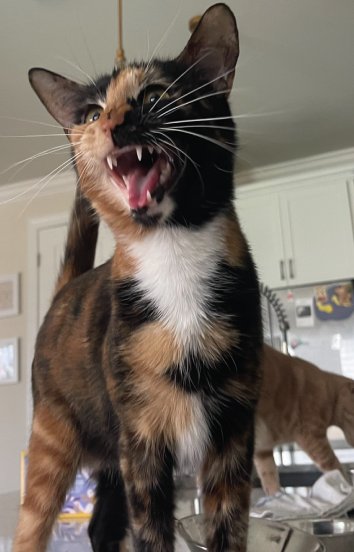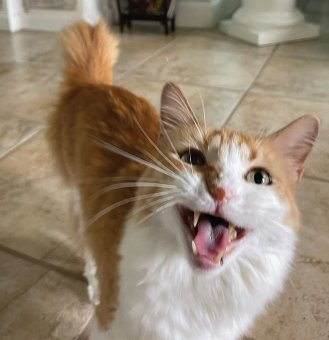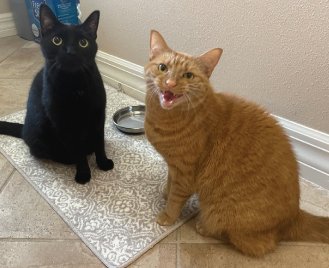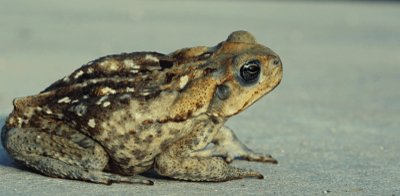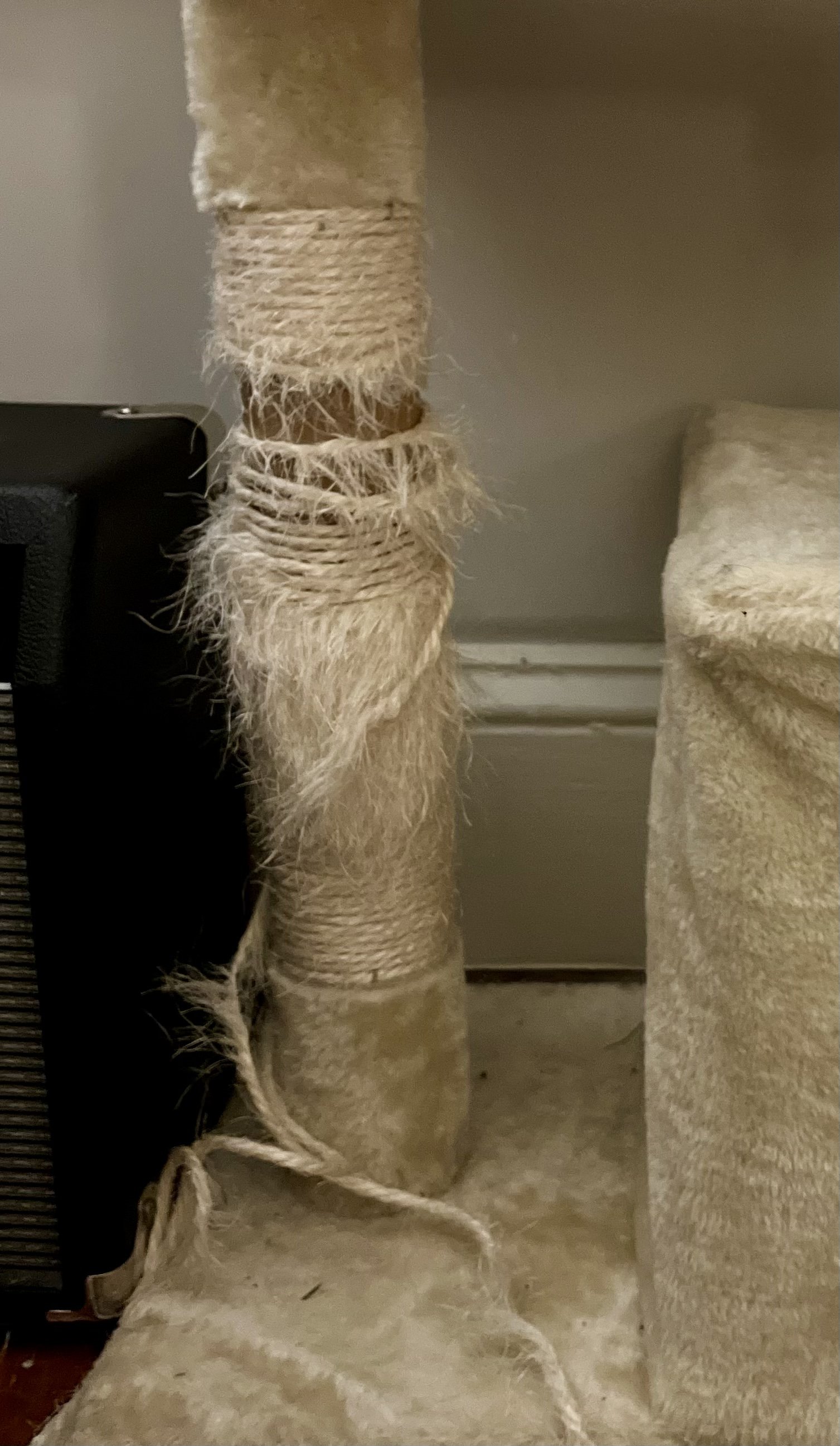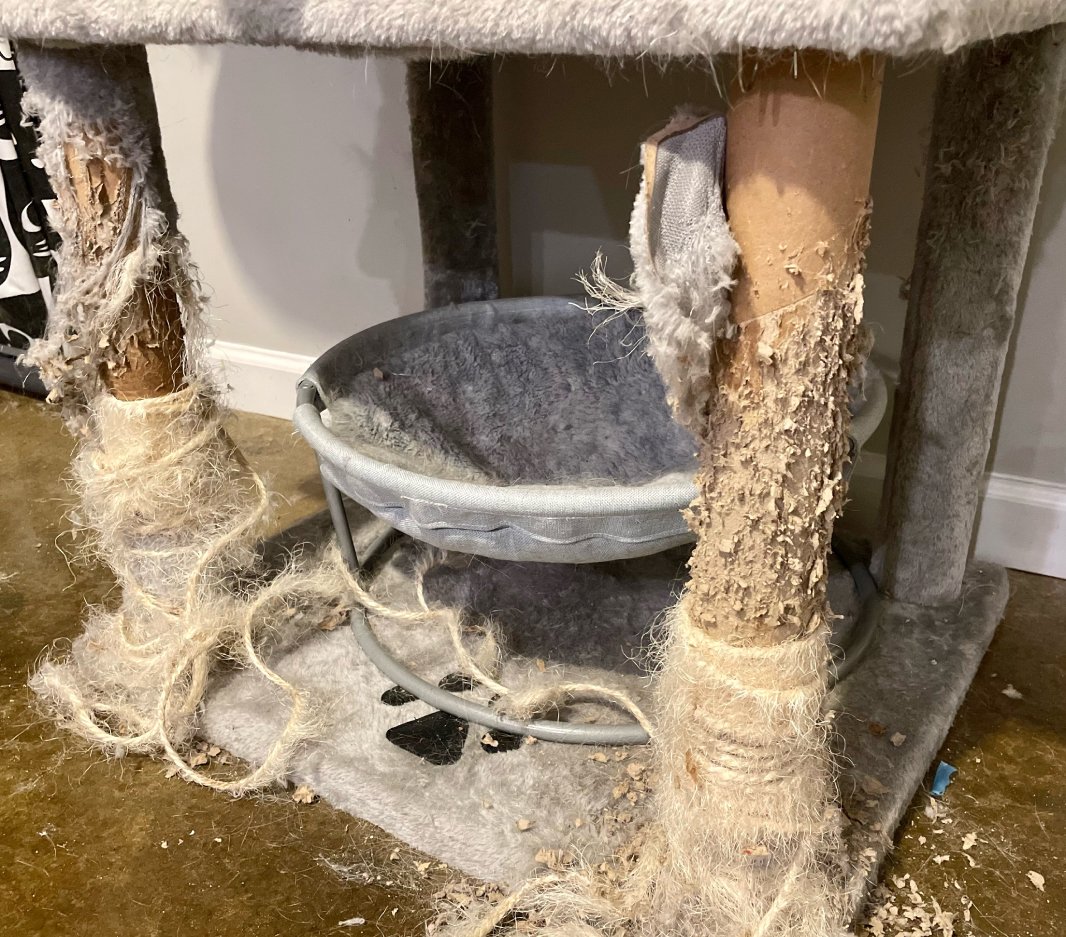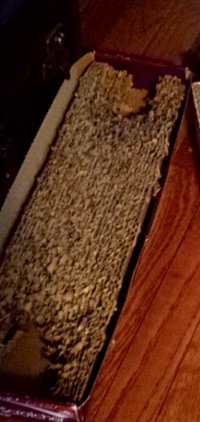5 Things To Do When Your Dog Won’t Potty Outside In Bad Weather
Dealing with a dog that refuses to potty in the rain can be frustrating, but with the right strategies, it’s possible to make it easier for you and your pup. In this blog, we’ll share five helpful tips for getting your dog comfortable outside in the rain.
Look for a covered area to potty
Looking for a covered area, such as a large tree or large umbrella, for your dog to potty during bad weather can provide a sense of security and comfort. A sheltered spot can encourage your dog to go outside when they might otherwise hesitate, ensuring they get the bathroom break they need.
Wear rain gear
Wearing rain gear like a raincoat and booties can make potty time more comfortable for you and your dog during bad weather. The raincoat keeps your dog dry and warm, while the booties protect their paws from getting cold or wet, preventing discomfort or irritation. This can make them more willing to go outside and do their business, as it reduces the negative impact of the weather on their experience. Plus, it helps keep them clean and dry when they return inside.
Get your dog used to the rain
To slowly start taking your dog outside in the rain, expose them to light rain for short periods. Use positive reinforcement like treats and praise when they go outside, even if they just stand there. Gradually increase the time spent outside and the intensity of the rain as they become more comfortable.
Try pee pads
If your dog refuses to go outside in the rain, you can try using pee pads as a temporary solution. Set up a designated potty area with a pee pad in a quiet, easy-to-access spot inside. Encourage your dog to use the pad by guiding them over it and offering praise or treats when they go. Over time, they may learn to associate the pad with potty time, especially during bad weather.
Bring their favorite toy
Bringing your pup's favorite toy outside during potty time in the rain can help distract them from the discomfort of the wet weather and make the experience more enjoyable. The toy can serve as a positive reinforcement, offering something familiar and fun to focus on while they do their business.
Every pup is different, so be patient and try different strategies to see what works best for your furry friend. After all, April showers bring May flowers!
https://pethelpful.com/dogs/dog-refusing-to-go-potty-in-the-rain
https://goodbuddydogtraining.com/my-dog-wont-go-pee-in-the-rain/
How To Check Your Pets for Ticks and Fleas
Keeping your pet healthy and comfortable means being proactive about potential pests like ticks and fleas, especially if they are outdoors often.
Pet-related fleas and ticks are common parasites that live on animals like dogs and cats, feeding on their blood. Fleas can cause itching, skin irritation, and allergic reactions, while ticks are known for transmitting diseases. These tiny parasites can cause big problems if left unnoticed, so knowing how to check your pet regularly is essential.
Supplies:
Tick Remover (left) and Flea Comb (right)
Flea Comb
Tick Remover/Tweezers
Magnifying glass (optional)
Gloves (optional)
Container/Bags (to place tick after removal)
Check Skin:
Ticks often attach themselves firmly to the skin.
Gently feel through your pet’s coat with your fingers, then run a flea comb through your pet’s fur, especially in thick or long areas. Fleas can get trapped in the comb’s teeth, allowing you to remove them. This will not only help you spot them but will also give you a chance to see any signs of irritation.
Fleas: Look for small, deep brown or black specks moving in the fur. You might also see "flea dirt," which are tiny black specks that look like ground pepper.
Ticks: Ticks are larger, often gray, or brown, and can be the size of a sesame seed or larger when engorged with blood. They might be found attached to your pet’s skin, typically around the ears, around their eyes, underarms, bellies, or between the toes.
NexGard is a once monthly chewable supplement that prevents and protects dogs from ticks, fleas and parasites.
Removing Fleas and Ticks:
For Fleas: If you find fleas, use a flea shampoo, or consult your vet about the best flea treatments. You can also use flea medication or collars as a preventive measure.
For Ticks: Use a pair of tweezers or a tick-removal tool to grab the tick close to your pet’s skin and pull it out gently, placing it into a sealed bag/container so that it does not escape. Avoid twisting the tick to prevent leaving parts of the tick behind. Dispose of the tick properly and monitor the bite site for any signs of infection.
After handling ticks, fleas, or anything your pet may have been exposed to, always wash your hands thoroughly with soap and water.
References:
https://www.petmd.com/dog/how-check-dog-ticks
https://www.banfield.com/Wellness-at-banfield/Skin-and-coat-care/How-to-check-for-fleas
Tips to Keep Your Cat from Scratching Your Furniture
You're not alone if your cat’s scratching is ruining your furniture! In this post, we’ll explore simple and practical solutions to protect your home while keeping your feline friend happy.
Keep the Environment Stimulating
Cats scratch to release energy. Interactive toys, perches, climbing spots, and hiding places will mentally and physically stimulate your cat and reduce the likelihood of scratching furniture out of boredom.
Trim Your Cat’s Claws Regularly
While this does not eliminate the behavior, regularly trimming your cat’s claws reduces the damage they may cause.
Cover Furniture with Protective Materials
Use protective furniture covers on common scratching spots, such as the corners of sofas, to reduce the wear and tear on your furniture. Cats dislike sticky surfaces, so double-sided tape may be applied as a furniture asset to keep them away.
Offer Scratching Materials
Redirect your cat to scratching materials such as scratching posts or a cat tree to avoid scratching on furniture.
Feliway Diffusers
Feliway is a product that mimics feline pheromones and can calm your cat. A calm environment and a Feliway scent plug nearby may reduce your cat's urge to scratch furniture by helping it feel more comfortable.
Refer to our post about Cat Scratchers and When to Replace Them, to find out more about the timeline of some scratchers!
5 New Year's Resolutions for You and Your Pet!
As the new year begins, it's the perfect time to set resolutions to benefit you and your furry friends! Whether you’re focusing on fitness or strengthening your bond with your pet, let's set some exciting goals for the new year!
1. Drink More Water
Staying hydrated is essential for both you and your pet as it helps regulate body temperature, supports digestion, and keeps your organs functioning properly. To keep your pet hydrated, you can use a pet fountain, which encourages them to drink more water with moving, fresh water. You can also offer water in multiple bowls around your home.
2. Outdoor Adventures
To embrace a more outdoorsy, adventurous lifestyle with your pets, start by incorporating regular lanai time where you can relax outside while your pets explore safely. Try new hiking trails, visit parks for open space, and enjoy picnics together. Open windows at home too to let your pets enjoy the sights and sounds of nature.
3. Prioritize Playtime
Playtime with your pets, both indoors and outdoors, is essential for their physical and mental well-being. It helps reduce stress, improve socialization, and strengthens the bond between you and your pet. Regular play also provides exercise and stimulation, preventing boredom and behavioral issues.
4. Brush Away!
Regular brushing keeps your cat or dog’s coat smooth, reduces shedding, and prevents mats. It also promotes healthy skin and strengthens the bond between you and your pet. Additionally, it provides a calming routine that can make grooming more enjoyable for both you and your pet.
5. Dental Health
Incorporate dental treats and dog-specific toothpaste this year! They are effective ways to support your pet's dental health. Dental treats help reduce plaque and tartar buildup, while dog toothpaste helps maintain healthy gums and fresh breath.
If you decide on incorporating extra outdoor time with your pet, check out our past blog on Hot Weather Safety Tips for Your Dog!
References:
Unleash the Holiday Cheer: Unique Gifts Your Pet Will Love!
It’s the Holiday Season! From interactive gadgets to cozy accessories, here are 6 unique gift ideas that will have your furry friends wagging their tails!
For Cats:
Glad Wags kitty loving his corner brush!
Self-Grooming Corner Brushes
Bring holiday cheer to your cat with this self-grooming corner scratcher, perfect for scratching and grooming!Heated Cozy Cat Bed
A cozy bed with a heating element that keeps your cat warm during the cooler months.Window Perch
A cozy perch that attaches to the window, giving your cat a sunny spot to lounge and watch the outside world.
For Dogs:
Glad Wags pup enjoying his Pupsicle!
Snuffle Mats
Treat your dog to a snuffle mat! Perfect for mental stimulation and festive fun! Hide treats in its cozy fabric folds to keep your pup entertained and engaged.Woof Pupsicle Dispenser
Cool down your pup this holiday season with a Woof Pupsicle Pop Dispenser, serving up frosty, festive treats in a safe rubber treat container!Jolly Soccer Ball
This fun, durable toy is perfect for play, offering endless fetch opportunities and cheer for your pup to enjoy.
Take a peek at our post about safety tips around the holiday season by clicking on this link here!
References:
https://www.akcpetinsurance.com/blog/guide-to-the-best-dog-toys-for-christmas-2022
https://aercmn.com/top-10-cat-toys-to-get-for-the-holidays/
https://www.thepioneerwoman.com/home-lifestyle/pets/g38114325/christmas-dog-toys/
Rainy Days Don't Have to be Ruff!
With the right essentials, you can turn a gloomy stroll into a splashy adventure and keep tails wagging through every raindrop!
We humans can easily throw on a raincoat and grab an umbrella, but it’s up to us to keep our furry pals protected when the downpour strikes. Grab your umbrella and let’s dive into the must haves for walking your furry friend in the rain!
Here are some essentials to pack for your rainy day walk:
Raincoat: Your dog will appreciate it! Not only will a waterproof raincoat help keep them dry, but it will also keep breeds with fur that mats easily (like poodles and bichons) safe from tangles. For smaller dogs, raincoats can keep them warm on chilly, rainy days.
Booties: Boots help keep your pup’s paws dry, and safe from bacteria, sharp objects and toxins that may be lurking in puddles.
Reflective Leash/Harness: Visibility can be compromised in rainy weather; therefore, a reflective leash adds an extra layer of safety on the sidewalk for passing cars. Any small glimpse of light will reflect on the leash and make the pup at the end of it more visible.
Absorbent Towels: Prepare absorbent towels at the door for when you return. It will help absorb as much moisture as possible compared to a regular towel!
Brush: After toweling off, a quick brush can help prevent knots and matting, especially for breeds with longer fur. Make sure to dry them thoroughly afterward!
Remember, on a rainy day, your pup might need some extra love and attention if they can't get their usual outdoor time. Be sure to offer plenty of snuggles and playtime inside until those clouds clear!
References:
A Guide To Verbal Cat Communication
Welcome to the purr-fect world of feline linguistics! Cat boast an impressive vocabulary of up to 21 distinct vocalizations, each a note in the symphony of cat communication. It's not just meows and purrs; it's a real language that can be as complex as a human conversation.
Welcome to the purr-fect world of feline linguistics! Cats boast an impressive vocabulary of up to 21 distinct vocalizations, each a note in the symphony of cat communication. It's not just meows and purrs; it's a real language that can be as complex as a human conversation.
Not all cats are born chatterboxes. Some, like the Maine Coons, tend to be part of the quieter breeds, while others, like the Siamese, are the talkative kitties of the feline universe.
Meowing: The signature soundtrack of feline communication! Kittens use it to summon their moms, but in adulthood, it becomes the cat's go-to language for humans. From greetings to playtime requests, expressions of excitement or frustration, to demanding attention, food, or room access – meows are the most popular of the cat communication world.
Purring: In the world of feline communication, there's one sound that reigns supreme – the purr! This sound is typically an indicator that your kitty is in a state of bliss—think lounging in a warm sunbeam or receiving chin scratches while sitting on their human’s lap. Interestingly, cats purr at a frequency between 25-150 Hertz, known to have therapeutic effects on bones and tissues. Beyond contentment, they may purr to self-heal, reduce stress, and even communicate with humans. The unique purring sound originates from the cat's laryngeal muscles rapidly contracting and relaxing.
Trilling: A trill is a high-pitched musical sound made by some cats during specific situations. Cats reserve this delightful sound for greetings and thanking their human admirers, often for treats or affection. They may also use this when communicating to their favorite feline sibling. It's the cat's way of saying, "You're my favorite."
Chirping: Initially, chirping is a mother cat's call to her kittens, adult cats also use chirps to grab attention and share their whereabouts. When faced with tantalizing prey outside the window, a chirp signifies excitement, tinged with a dash of frustration.
Chattering: Have you ever caught your cat silently chattering away? It's not Morse code; it's their voiceless jaw clash, usually reserved for spotting prey out of reach. It's the rhythm of their imaginary hunt.
Growling and Hissing: Growling is a low rumble signaling threats and impending feline fury. Hissing, its dramatic cousin, is the involuntary response to a surprise threat. Both come with a side of fear-inducing body language – arched back, flattened ears, twitching tail, and the classic Halloween cat posture. When the growls and hisses start, heed the cat's message: "Step back, I'm not in the mood!"
Spitting: More intense than a hiss, this explosive burst signals a peak threat situation. It's the cat's way of saying, "Seriously, back off!" – accompanied by a swift, lashing-out movement for added drama.
Yowling and Howling: Imagine a cat's meow on steroids, and you've got yowling – a prolonged, distressed sound. Howling is its shorter cousin. These are the sirens of cat communication, indicating physical or emotional distress. Separation anxiety, pain, or just a need for attention – it's their way of belting out their feelings.
Caterwauling: A loud, long whine reserved for unspayed females in heat. Directed at human family members, it's their expression of pain, discomfort, fear, or a blatant demand for attention.
In this enchanting world of feline sounds, any change in frequency, intensity, duration, or pitch is your cat's SOS. A trip to the vet might be in order, and for some, a dash of anxiety or pain meds could be the magical remedy. So, listen closely, fellow cat enthusiasts, for in their symphony of sounds, your furball's story unfolds, one delightful meow at a time!
References
What Are At-Home Dog DNA Tests?
Have you ever looked at your furry friend and wondered about their ancestry? In the age of technology, people have been satisfying their curiosity with at home cat and dog breed DNA tests. These tests claim to unveil the hidden secrets of our canine companions' lineage, but how accurate are they?
Why Are Owners Interested In Their Dog’s Breed
A dog breed DNA test offers essential insights for pet owners curious about their dog's genetic makeup. Understanding the breed composition provides valuable information on health risks and predispositions, enabling proactive healthcare. It also reveals behavioral traits, aiding in personalized training and strengthening the bond between owner and pet. For those with rescue or mixed-breed dogs, the test unravels the mystery of their heritage, satisfying curiosity and deepening the connection with their pet.
The Science Behind Dog Breed DNA Tests
Before we look into accuracy, let's understand the science behind these tests. Dog breed DNA tests work by analyzing specific regions of a dog's DNA known as markers or SNPs (Single Nucleotide Polymorphisms). These markers are compared to a reference database of known dog breeds to determine the dog's genetic heritage. Fun fact! Mars Petcare developed the first canine DNA test in 2007
Ancestral Complexity The accuracy of dog breed DNA tests largely depends on the complexity of a dog's ancestry. If your pup has a straightforward lineage dominated by one or two breeds, the test results tend to be quite accurate. However, when your dog's family tree is more like a dense forest with numerous branches, accuracy can be challenging to achieve.
The accuracy of DNA tests varies among different breeds. For purebred dogs, the tests are more reliable. However, for mixed-breed dogs, the accuracy drops. So, the more mixed the ancestry, the less precise the results.
The Role of the Reference Database Another crucial factor affecting accuracy is the size and diversity of the reference database. The reference database is a collection of DNA samples from purebred dogs of known ancestry. The larger and more diverse this database is, the better the test can identify less common breeds and accurately pinpoint your dog's genetic makeup.
Companies like Embark and Wisdom Panel have extensive reference databases that include a wide range of breeds, increasing the chances of accurate results.
Sample Quality The quality of the DNA sample collected from your dog's cheek swab or saliva can impact results. Contaminated or insufficient samples may lead to less accurate outcomes.
Surprising Discoveries While accuracy is important, it's worth noting that dog DNA tests can also reveal some unexpected and delightful surprises and may uncover a breed in your dog's ancestry that you never suspected. It's a fun twist to the journey of understanding your furry friend better.
References:
Why Do Cats Always Land On Their Feet?
Cats possess an incredible ability that has captured human attention for generations: the skill to land on their feet. What’s the science behind this captivating cat superpower? It comes down to a combination of biomechanics, reflexes, and physics. Cats are known for their exceptional agility, and their bodies are designed to facilitate the impressive acrobatics.
Cats possess an incredible ability that has captured human attention for generations: the skill to land on their feet. What’s the science behind this captivating cat superpower? It comes down to a combination of biomechanics, reflexes, and physics. Cats are known for their exceptional agility, and their bodies are designed to facilitate the impressive acrobatics.
Flexible Spine: Cats boast a spine that's much more flexible than that of many other animals. The spine's extraordinary mobility, particularly in the thoracic region, allows cats to twist their bodies with remarkable ease. As a cat begins to fall, its body initiates a twisting motion that sets the stage for a controlled descent.
Vestibular System: Cats possess an intricate inner ear system, known as the vestibular system, which grants them an impeccable sense of balance. This finely-tuned system allows them to gauge their orientation relative to gravity, ensuring they maintain equilibrium even during a fall.
Reflexes and Rotation: Their ability to rotate their front and back halves independently adds an extra layer of finesse to their descent strategy. By manipulating their body's orientation, cats can align their feet underneath them, setting the stage for a graceful landing.
Visual Focus: Cats have a unique ability to maintain visual focus on a specific target. This skill aids them in determining their position in relation to their surroundings. As they plummet, their keen eyesight allows them to calculate the best landing.
Built-in Safety Feature: Ever notice how a cat's body opens up like a parachute during a fall? This instinctive response isn't just for show. By spreading their limbs out, cats increase air resistance, effectively slowing down their fall. This additional time allows them to adjust their position mid-air, enhancing their chances of landing safely.
The next time you watch your feline friend navigate their environment with unparalleled elegance, remember that their astonishing acrobatics are the result of an intricate interplay of biology, physics, and evolution.
REFERENCES:
Scientific American
A-Z Animals
11 Holiday Safety Tips For Your Pet
As the holiday season approaches, our homes transform into bustling hubs of celebration. Among the twinkling lights and festive feasts, it's essential to remember the well-being of our beloved pets. While they eagerly partake in the holiday excitement, their safety must remain a priority.
Mind the Decorations: Holiday decorations can be fascinating to our pets but can also be dangerous. Keep a close eye on tinsel, ribbon, and small ornaments that could be choking hazards. Opt for pet-friendly decorations and secure larger ones out of your pet's reach.
Create a Calm Retreat: Holiday gatherings can be overwhelming for pets with all the noise and commotion. Designate a quiet, safe space where your furry friend can retreat when they need a break. Provide comfortable bedding, water, and their favorite comfort items to make it an inviting, relaxing place.
Watch the Door: Holiday gatherings mean more people coming and going from your home. Keep an eye on your pets near the door, as they may try to slip outside, especially if they're anxious or curious about the guests.
Secure the Trash: The aroma of holiday leftovers can be irresistible to pets. Ensure trash cans are securely closed or kept in a pet-proof area to prevent scavenging, which can lead to digestive issues.
Pet-Proof Your Feast: Be cautious about what your pets consume while indulging in holiday feasts. Many human foods, such as chocolate, grapes, onions, and alcohol, can be toxic to pets. A trigger for pancreatitis in our furry friends often stems from the consumption of high-fat foods. During holiday seasons, this can include indulgences such as turkey (especially the skin), fatty leftovers, gravy, bacon, and dishes with butter. Keep festive foods out of their reach and discourage guests from feeding them table scraps. Never give your pet cooked bones. Bones can splinter into shards that injure your pet's mouth and digestive tract. They can also harden in their intestines, causing a blockage.
Be Cautious with Candles: If you're using candles for ambiance, place them out of your pet's reach. Curious pets can knock them over and cause fires or burns. Consider using flameless, battery-operated candles as a safer alternative.
Limit Access to Electrical Cords: Holiday lights and decorations often come with electrical cords that can attract pets. Use cord covers or secure them in a way that keeps your pets from chewing on them, which can lead to electrical shock.
Avoid Harmful Plants: Certain holiday plants, like poinsettias, mistletoe, and holly, can be toxic to pets if ingested. Keep them away, or consider using artificial alternatives to keep your pets safe and your home festive. Curious about which other plants are harmful to your pets? Click here to find out!
Introduce Your Pet to New Faces: If you're hosting guests, especially those with children or other pets, ensure proper introductions with your own pets. Some pets may be anxious around unfamiliar faces, so a gradual introduction can help ease tension. Remind guests, especially children, how to properly interact with your pet to avoid potential anxiety in your pet that may result in a reactive bite or scratch. If your pet isn't fond of company, escort them to their safe space and check on them during the event.
On The Road Again: If the holiday takes you on a road trip, make sure your pet is wearing proper identification, a harness that is secured to a tether or doggy seat belt (do not attach any restraint directly to their collar), or place them in their crate (secured to the vehicle in the event of an accident). Bring food/treats, bowls, water, leash, potty supplies, blanket, medication, first-aid kit, toys, and vet documents. Create a list of emergency vets along your route in case of emergency or illness.
Exercise Your Pal: Be mindful of your pet's need for proper exercise during the busy season. Create a schedule that allows time to care for your pet, or call your local pet-sitting company for assistance!
Resources
VETSS
Six Scary Reasons To Keep Your Dog Away From Puddles
Ah, October—the month of falling leaves, cozy sweaters, and pumpkin-spiced everything. But beneath the autumn charm lies a hidden danger: the dreaded puddle. Yes, those seemingly innocent patches of water can harbor some truly eerie and pet-unfriendly surprises. Gather 'round, fellow pet lovers, as we uncover the scary things lurking in puddles.
Ah, October—the month of falling leaves, cozy sweaters, and pumpkin-spiced everything. But beneath the autumn charm lies a hidden danger: the dreaded puddle. Yes, those seemingly innocent patches of water can harbor some truly eerie and pet-unfriendly surprises. Gather 'round, fellow pet lovers, as we uncover the scary things lurking in puddles.
The Haunting Hookworms: Hookworms, microscopic parasites that survive in moist environments like puddles for weeks. When your dog decides to take a sip or roll around in a puddle, these creepy critters can latch onto their skin or even find their way into their digestive system. Cue spooky symptoms like diarrhea, anemia, and weight loss!
The Ghostly Giardia: Giardia, another waterborne terror, loves to haunt puddles. If your pup encounters this ghostly parasite, she might experience tummy troubles and, in severe cases, chronic diarrhea.
A Chilling "Chemical Brew": Let's not forget that puddles may also contain a brew of chemicals. From antifreeze to pesticides, these concoctions can turn a seemingly harmless puddle into a poisonous cauldron.
The Alarming Blue-Green Algae: Don't be fooled by its innocent appearance; you don't want your dog to encounter blue-green algae. Puddles and stagnant water can be breeding grounds. Ingesting or even just licking it off their fur can lead to seizures or liver failure.
Lurking Leptospirosis: Amongst autumn's tranquility, a sinister bacterium, leptospirosis, lurks in stagnant waters. Rodents often wade through rain puddles and unwittingly transmit it to both dogs and humans, leading to consequences like liver and kidney failure.
Bufo Toad (Photo Source)
Tale of the Toad: Among the eerie creatures that emerge at night are the Bufo toads, known for their hazardous toxin. There are two species: Bufo marinus (marine toad, cane toad, giant toad) found in Florida, Hawaii, and Southern Texas, and Bufo alvarius (Colorado River toad, Sonoran Desert toad) found in Southern Arizona, Southern California, and Southern New Mexico. When provoked by a curious dog, their parotid glands unleash a thick, white secretion that may infiltrate the dog's eyes, nose, or mouth. Symptoms range from local irritations to systemic disease and death in the darkest of cases.
But fear not, dear dog lovers! While puddles may be home to spooky surprises, a watchful eye can keep your pup safe from these eerie encounters. Keep an eye on your furry friend and steer them clear of standing water. You never know what might be beneath the surface, ready to give you and your dog a bone-chilling surprise.
REFERENCES:
Why Do Dogs Circle Before Lying Down?
You've undoubtedly observed the routine of scratching, pawing, and meticulous circling your pup performs before settling into slumber. But what lies behind this endearing quirk? Let's dig into the intriguing motivation behind your dog's nighttime or nap-time antics.
You've undoubtedly observed the routine of scratching, pawing, and meticulous circling your pup performs before settling into slumber. But what lies behind this endearing quirk? Let's dig into the intriguing motivation behind your dog's nighttime or nap-time antics.
Getting Comfy: In the wilderness, your dog's ancestors precisely customized their sleeping spots by carefully flattening grass and leaves, eliminating any trace of items that may prick them during the night.
Ensuring Safety: This behavior is also a dance of vigilance and preparedness for the unknown. Through their circling ritual, they position themselves strategically against potential threats. They also align themselves to capture any sensed dangers the wind may carry as a warning. Moreover, these circular movements present an opportunity to scan for potential predators one last time before settling in for sleep.
Assessing the Pack: Circling is a tool for pack leaders to evaluate the group's arrangement and survey the surroundings, ensuring that no individual has fallen out of sight. Interestingly, sleeping in a close dog pile where each touches the other facilitates the pack's communication, signaling wakefulness amongst the pack in the face of danger; when one wakes, it wakes the rest of the pack to potential danger.
Regulating Temperature: Temperature regulation is another skill embedded in this ancient behavior. In warmer environments, the scratching motion unveils cooler soil, while in chillier regions, dogs curl up, conserving warmth. Nature's thermostat, choreographed by instinct!
Too Much Twirling? But what if your dog's twirls transform into an all-night performance? This could be a sign of discomfort or pain. Excessive circling might point to issues like arthritis or neurological challenges such as dementia. In such instances, seeking a veterinarian's guidance becomes essential to ensure your pup's well-being and the restoration of bedtime tranquility.
So there it is—every twirl, every scratch, and each pawing motion creates a bridge to the past, connecting our four-legged comrades with their untamed lineage. As you observe your dog's nightly ritual, remember that beneath the cozy blankets lies a narrative spanning generations—a tale of survival, comfort, camaraderie, and timeless rituals.
References:
VCA Animal Hospitals
Live Science
Why Do Cats Love Catnip?
Have you ever wondered why your kitty loves catnip so much? If so, join us for an enchanting journey into the fascinating intertwinement of cats and catnip!
Catnip, scientifically known as Nepeta cataria, possesses remarkable power over our furry feline friends. The secret lies in the aromatic compound nepetalactone found in the leaves and stems of the plant. When cats encounter catnip, their sensory journey begins.
Cats' olfactory receptors are activated upon inhaling or ingesting nepetalactone, triggering a cascade of reactions. These responses can vary from cat to cat but commonly include a delightful display of playfulness, silliness, and relaxation. Some kitties drool or may swat as they are super frisky now!
Scientifically speaking, catnip induces a behavioral response called "catnip sensitivity" in approximately 50-75% of cats. It's an inherited trait, and kittens usually don't show interest until they are around three to six months old, when they display genetic sensitivity.
When under the influence of catnip, cats may engage in playful antics like rolling, rubbing, running, and leaping. It's their version of a blissful escape, a moment of pure joy and excitement. The effects typically last for around 10 to 15 minutes before cats enter a temporary refractory period, during which they become temporarily immune to catnip's allure.
Catnip isn't just about fun and games; it can also serve practical purposes. Many cat owners use catnip as an enrichment tool to encourage play and mental stimulation. Catnip-infused toys and scratching posts can entice cats to engage in healthy activities, keeping them physically active and mentally sharp.
It's important to note that catnip is generally safe and non-addictive, but like anything, moderation is key. Offering excessive amounts of catnip may lead to temporary digestive issues or lethargy. So, remember to use it in moderation and provide your feline friends with a well-rounded and balanced environment.
Go ahead and embrace the magic of catnip, let your cat frolic in its playful embrace, and enjoy the delightful bond that forms between you and your feline companion. Science has never been so entertaining!
Do Dogs Dream?
Welcome to our whimsical exploration of one of life's greatest mysteries: Do dogs dream? If you've ever seen your pup twitching, running, or even woofing while they sleep, you've likely pondered the fascinating world that unfolds in their slumber. Join us on this adventure as we embark on a journey into the realm of doggy dreamland!
Welcome to our whimsical exploration of one of life's greatest mysteries: Do dogs dream? If you've ever seen your pup twitching, running, or even woofing while they sleep, you've likely pondered the fascinating world that unfolds in their slumber. Join us on this adventure as we embark on a journey into the realm of doggy dreamland!
The Science Behind Dreams: To uncover the truth about canine dreams, let's delve into the scientific side. Like humans, dogs experience different sleep stages, including REM sleep, which is associated with dreaming. Studies using electroencephalography (EEG) have revealed similar brain activity patterns in dogs during REM sleep, complete with rapid eye movements and muscle twitches. So, it's not just your imagination—your furry pal is dreaming!
Clues in Their Behaviors: During REM sleep, dogs often engage in movements that resemble their waking activities. Picture your pooch playfully chasing an imaginary squirrel or pawing at an imaginary tennis ball. These adorable antics suggest that our canine companions reenact elements of their waking experiences in their dreams.
A Dog's Dreamland: Imagine entering your furry friend's dream world. While we can't truly know what dogs dream about, we can speculate based on their behavior and experiences. Dogs might dream about their favorite activities—running freely through a grassy field, frolicking at the beach, chasing lizards, or engaging in an exhilarating game of fetch. Perhaps they dream of exciting encounters with fellow canines or relive cherished moments with their beloved humans.
Emotional Well-being: Dreams may affect a dog's emotional well-being like humans. Dreams may help dogs process and consolidate memories, learn from their experiences, and even relieve stress. So, the next time you see your pup immersed in a dream, remember that it could be their way of unwinding and recharging, much like our dreams do for us.
Sharing the Dream Experience: As we explore the fascinating realm of doggy dreams, one question arises: Can we, as dog owners, influence their dreams positively? While we can't directly control their dream content, providing enriching experiences, engaging toys, and a stimulating environment can contribute to their well-being. Remember, happy and fulfilled waking hours can translate into sweet dreams for our furry friends. Sleep tight!
References:
VCA Animal Hospitals
Hot Weather Safety Tips For Your Dog
Doggos want to be wherever their humans are and if that means outside in the 101 degree Florida sun, that’s where they will be! But, it is important that you look out for your furry friend during the summer months and realize how much the hot weather can affect them. Read over these tips before you head out for a hike with your pooch:
Calling all dog lovers! As the scorching Florida sun beats down, it's essential to prioritize the well-being of your furry friends. While they may want to be by your side no matter the temperature, we must be aware of the impact hot weather can have on them. Get ready to discover some tips to make this summer a breeze for your four-legged family member!
The Most Susceptible: It's important to recognize which dog breeds are less tolerant of heat. While your furry friend's breed may not determine their ability to handle warmer weather entirely, some breeds, such as brachycephalic breeds, are more prone to discomfort. Keep an eye on Bernese, Boston Terrier, Boxer, Bulldog, Husky, Keeshond, Pekingese, Persian, Pug, Shih Tzu, Mastiff, St. Bernard, and Japanese Chin, among others. Additionally, remember that obese and senior pets, as well as those with heart and lung issues, require extra care during hot weather.
Warning Signs: Watch out for signs and symptoms associated with overheating and heatstroke. Increased heart rate, excessive panting, drooling, thirst, reddened gums, vomiting, diarrhea, muscle weakness, and uncoordinated movements indicate that your pup might be struggling with the heat. Stay vigilant to ensure their well-being.
Car Rides: On a warm day, never leave your pet alone in the car. Even at 70 degrees, the interior temperature can soar to a deadly 104 degrees within half an hour. Remember, this can lead to fatal heatstroke for your pet and serious legal consequences for you. Let's keep our furry friends safe and avoid any unnecessary risks (source: heatkills.com).
Coat Care: Contrary to popular belief, shaving your dog's coat doesn't actually keep them cooler. The guard hair (out layer) serves as natural protection against moisture, overheating and sunburn. Cutting the guard hair permanently damages their coat and rarely grows back. So, resist the urge to grab those clippers and let your pup rock their fabulous fur while staying comfortably cool.
HOT PAWS: Imagine walking on hot pavement barefoot—ouch! To spare your furry friend from burnt paws, follow this simple rule: test the pavement first. Place your bare foot or the back of your hand on the ground. If it's too hot to hold for a full 10 seconds, it's too hot for your pup's sensitive paws. Keep them safe and opt for shady or grassy areas instead.
Stay Hydrated: Dehydration is a real concern during hot weather. Ensure fresh water is always accessible to your pets, and remember that they should drink approximately one ounce of water per pound of body weight (source: petmd.com). Consider carrying a collapsible bowl and a water bottle during your outdoor adventures to provide refreshing mid-walk hydration for your furry companion.
Poisons and Picnics: Beware of potential hazards! Avoid areas treated with rodenticides and insecticides, as they can be toxic if ingested by dogs and cats. Keep citronella candles and torches out of reach, as they are also poisonous. Ensure any sunscreen or bug repellent used on your pet is labeled safe for animals. Finally, be mindful of picnic foods that can harm or kill your pet, including raisins, grapes, avocados, onions, chocolate, xylitol, alcohol, garlic, peaches, and plums.
Summer-Time Dangers: Fireworks and dogs don't mix well. The loud noises can be frightening and lead to your dog attempting to escape the noise by running away. Avoid bringing your dog to events where fireworks will be present, especially on July 4th—the top day for reported lost pets. Instead, keep them safe and secure at home during fireworks displays.
Splish-Splash: Supervision is key when your pet is around or in a pool, even if they're good swimmers. Remember that pool water, due to chlorine, is not suitable for drinking. After swimming, thoroughly rinse your dog's coat to remove any harmful chemicals. And if your furry friend is on a boat, always put a flotation device on them for their safety.
With these tips in your arsenal, you can make this summer an unforgettable, safe, and enjoyable experience for you and your furry companion. Don't forget to check out our Pet First Aid Kit blog to ensure you're fully prepared for any potential emergencies. Get ready for some summer fun in the sun with your beloved pooch!
How Does Your Pet's Microchip Work?
Microchipping your pet is a common and highly recommended practice in today's world. It provides pet owners with the best possible chance of being reunited with their beloved furry friends if they ever go missing. While many people may be familiar with the term "microchip," few know exactly how it works. So, let's explore this technology a bit further.
Microchipping your pet is a common and highly recommended practice in today's world. It provides pet owners with the best possible chance of being reunited with their beloved furry friends if they ever go missing. While many people may be familiar with the term "microchip," few know exactly how it works. So, let's explore this technology a bit further.
A microchip is a tiny electronic device, about the size of a grain of rice, that is implanted just under the skin of your pet, usually between the shoulder blades. The process of implantation is similar to that of a vaccination and does not require anesthesia. Once the microchip is inserted, it will sit passively under the skin, storing a unique identification number and contact information that is associated with your pet.
It is important to note that microchips do not require a battery or any active power source, nor do they actively transmit any information. Rather, they are only activated with a scanner using RFID (Radio Frequency Identification Device) technology. This sends out radio waves that activate the chip. Once activated, the scanner displays the permanent ID number associated with the microchip.
FUN FACT! Microchips do not have any tracking capabilities, such as GPS and are designed to last 25 years.
While there are various types of microchips available, universal scanners are now able to read any type of microchip frequency. However, it is important to note that not all scanners are universal, and some can only detect certain types of microchips. Fortunately, most shelters and veterinarians now carry universal scanners, but this wasn't always the case.
IN THE NEWS! International Standards Organization (ISO) recently approved and recommended a global standard for microchips, with the aim of creating a consistent worldwide identification system. This means that if a dog implanted with an ISO standard microchip in the US travels to Europe and becomes lost, the ISO standard scanners in Europe would be able to read the dog's microchip. However, if the dog was implanted with a non-ISO microchip and the scanner was not universal, the microchip may not be detected or read.
IMPORTANT TO NOTE! Not all microchipped pets are reunited with their owners. According to a cross-sectional study conducted by the American Veterinary Medical Association (AVMA), there are three main reasons for this:
1.) An incorrect or disconnected telephone number
2.) Owner did not return phone calls or respond to a letter
3.) The pet is registered to another group (whether it be the shelter the pet came from, the veterinary’s office that implanted it, or even a breeder).
If you move or change your phone number, it is crucial to update your pet's chip information. This step is particularly important for snowbirds or those who frequently travel with their pets. If you are unsure of what type of chip your pet has, consult with your veterinarian or animal shelter, as each microchip contains a registration number and the phone number of the registry for the particular brand of chip. Some owners ask their vet to scan their pet’s microchip at their annual check-up to ensure the chip is still working properly. The chip can shift in the shoulder over their lifetime.
IN CONCLUSION! Microchipping your pet is a quick and easy way to ensure their safety and your peace of mind. By taking the time to register your pet's information and keep it up to date, you can help increase the chances of a happy reunion should your pet ever become lost.
When Should a Cat Scratcher Be Replaced?
As a pet sitting company, we understand that your feline friend's scratching behavior can sometimes be a mystery. You may have already provided them with a scratching outlet, but how do you know when it's time to replace it? We've got you covered with some advice to help you brush up on your knowledge about your feline's instinctual scratching habits and provide some tips on when it's time to order a replacement scratcher.
Why Do Cats Need to Scratch?
Nail & Paw Health: Scratching is crucial for your cat's nail and paw health. It helps remove the outer layer of their nails, keeping them clean and debris-free. It's no surprise that cats often visit their scratchers after using the litter box - they're particular about their hygiene! The vigorous motion also provides a good workout that helps keep their paw muscles strong and stretched while satisfying their innate scratching instinct.
Scent Marking: Scratching isn't just about physical health. It's also a way for cats to mark their territory and express themselves. By scratching, they leave behind their own personal scent, which tells other animals what "belongs" to them. They also like to leave behind their scent on items that bring them joy, like their favorite scratcher!
Self Soothe: There are also self-soothing benefits of scratching, which can come in handy when your cat is feeling particularly excited like during their meal preparation and playtime, or during stress, like during a thunderstorm or when the vacuum is in use.
Types of Scratching Styles
When it comes to types of scratching styles, some cats prefer to scratch at items that lie horizontally, such as carpets, rugs, or furniture seats. These kitties would likely prefer a scratching pad or lounge that lays flat. On the other hand, cats that prefer to scratch vertically - like the backs of sofas, curtains, or corners of walls - would likely enjoy scratching posts or cat trees. And, of course, many cats are ambidextrous scratchers, meaning they enjoy both horizontal and vertical options.
what affects the longevity of a Scratching Pad?
The material it's made of plays a big role. Carpet and wood options tend to last longer than sisal fiber or corrugated cardboard. Additionally, the cat's frequency of use, breed/temperament/age, and the number of cats in the home all factor into a scratcher's lifespan. TIP! Regular nail trimmings can help extend the life of a scratcher.
When Should a Cat Scratcher Be Replaced?
There is no set time frame in which a scratcher should be replaced. A good rule of thumb is to take a look at it and check for signs of wear and tear. If the carpet or rope is fraying, the cardboard is torn to bits, or your kitty has lost interest in their previously-loved post, it's time for a replacement. Not only will this help maintain your furry friend's paw health, but it will also prevent them from turning to your furniture or rugs for scratching satisfaction or ingesting pieces that have fallen off of the scratcher.
Below are examples of scratchers that need to be replaced:
Thinking of Hiring a Home Watch Service?
If you’re flocking north for the season or taking an extended vacation, scheduling a regular Home Watch Service will give you peace-of-mind while you’re away.
Our Home Watch Service is a valuable service that helps protect your home and property through regular onsite inspections to ensure there are no signs of immediate or potential damage or danger. We’re your eyes and ears while you are away and can be scheduled for any frequently desired. Your home watch visit is tailored to your specific needs.
If you’re flocking north for the season or taking an extended vacation, scheduling a regular Home Watch Service will give you peace-of-mind while you’re away.
Our Home Watch Service is a valuable service that helps protect your home and property through regular onsite inspections to ensure there are no signs of immediate or potential damage or danger. We’re your eyes and ears while you are away and can be scheduled for any frequently desired. Your home watch visit is tailored to your specific needs.
Exterior Inspection:
Collect mail, packages, door-hangers, newspapers, lawn signs
Signs of vandalism and/or forced entry through doors and windows
Pool and spa are being cared for (cleaned, adequate water levels)
Lawn and landscaping is being maintained
Trash/Recycling to the curb and back inside
Interior Inspection:
Major signs of mold/mildew
Visual signs of pest infestation
Signs of leaks or water damage
Air conditioner is cooling properly
Run water through sinks, showers/tubs, flush toilets
Check electrical panel for tripper breakers
Water plants inside
Rotate lights
Visit property post-storm as needed/requested
Meet and provide access to service providers: contractor, utility representative, repairmen, delivery services, realtor, decorators, etc.
Accept/sign for scheduled deliveries
PREVENT & HANDLE ISSUES: Having an insured and bonded company keeping an eye on your property is a decision of a responsible homeowner. Leaving your home unattended for months or even a week could lead to all types of disasters including leaks, pest infestation, or vandalism. Catching a minor issue now can keep it from turning into a major issue.
LEGAL CONCERNS: Some mortgages and homeowners insurance policies require that an unoccupied home be checked on a regular basis. If a problem arises they may decline your claim if you can’t show proof of your home’s caretaker. For example, certain policies have a Water Damage 14-Day Exclusion which means if water damage takes place to your uninhabited home and it was found over 14 days after the damage occurred the claim would be denied. They will choose a trained professional to determine when the damage happened and the results are often not in the favor of the homeowner.
SAFETY: Having your vacant home appear “lived-in and tidy” by our home watch service will help deter potential break-ins and damage from happening.
HONEY-DO LIST: It can be hard to decide when to get your pool resurfaced or bedroom painted especially in your “snow-bird” home since you are only there to enjoy it for part of the year. Many people decide to have work done in their absence so they can return home to their stress-free homestead (no more living in a construction zone)!
Our home watch company can aid in opening your home for the service personnel, remaining on the premises to maintain security if requested, securing your home when work is completed, and reporting back to you on the progress and any issues that may have arisen.
Home Watch can even attend walk-throughs with inspectors and realtors for those selling their house from a distance.
STORMS: Many of us are glued to our weather app when a hurricane is approaching and it can be a helpless feeling to watch a storm heading towards your property when you’re away. Our home watch service can ease your worries knowing that we are there to prep your home for the storm and survey your home for damage once the storm passes.
PEACE OF MIND: Homeowners can finally breathe a sigh of relief knowing they have a reliable and professional company to count on!
Xylitol Poisoning In Dogs
Stash your gum and check your peanut butter label because there is a commonly used ingredient called xylitol in many foods and products made for human-use. Xylitol, also known as birch wood, is often seen in sugar-free desserts, certain peanut butters, and even baby wipes.
Stash your gum and check your peanut butter label because there is a commonly used ingredient called xylitol in many foods and products made for human-use. Xylitol, also known as birch wood, is often seen in sugar-free desserts, certain peanut butters, and even baby wipes.
It doesn’t take much to cause harm to your pooch. For example, one piece of gum is toxic to a 10-pound dog!¹ This sugar can make its way into the paws of many pups since it is frequently used, and humans tend to be unaware of its hazards to dogs. If you are a dog pawrent, educate yourself on this important pet-safety topic now!
What is it and why is it dangerous: Xylitol is a natural sugar derived from plants that has a very sweet taste, can keep items moist, and is heat-stable, which means it doesn’t carmelize.³
People can ingest xylitol because it doesn’t cause a change in blood sugar, making it a popular sugar substitute. Unfortunately, in canines it has the opposite effect. When a dog ingests xylitol, it is absorbed quickly and signals the pancreas to release a large amount of insulin, resulting in a sudden drop in blood sugar that can lead to a number of side effects, including death.
Products commonly containing xylitol:
Dental products: gum, toothpaste, mouthwash, breath mints
Toiletries: shampoo, moisturizer, deodorant, baby wipes, sunscreen, cosmetics
Medicines: cough syrup, cough drops, nasal spray, chewable/gummy vitamins
Foods: peanut butter, fruit drinks, drink powder, jelly/jam, cereal, Jell-O, ketchup, syrup, sugar-free desserts, and ice cream
700+ products containing xylitol can be viewed by clicking here
This is an emergency!: If you suspect your dog has ingested xylitol, you should immediately have your dog evaluated and treated by a veterinarian. Left untreated, this can quickly turn into a life-threatening event.
Pet Poison Number: 800-213-6680
Symptoms: Signs of hypoglycemia (low blood sugar) may appear 10 mins after ingestion, while in others cases, it could take over 24 hours for a sign or symptom.
Vomiting
Loss of balance
Stumbling
Weakness
Lethargy
Depression
Tremors
Seizures
Collapsing
Lack of coordination
Coma
How common is ingestion?: The Pet Poison Helpline reported a 108% increase in calls regarding xylitol poisoning between 2015 and 2020, and their database has more than 20,000 cases between 2013-2020! ²
Other names: Xylitol can be listed as “inactive ingredients” or “other ingredients” on product labels. It isn’t always listed as xylitol and may be disguised under a different name, such as²:
Alcohol Sugar
Birch Sugar
Wood Sugar
Birch Bark Extract
CHO
E967
Meso-Xylitol
Méso-Xylitol
Pentahydric alcohol
Penta-hydroxy
Pentane
Sucre de Bouleau
Wood Extract
Xilitol, Xylit, Xylite
Xylo-pentane-1,2,3,4,5-pentol
In the news: Currently, steps are being taken to minimize the amount of this type of poisoning as cited from Whole Dog Journal, “…bipartisan legislation (called the Paws Off Act of 2021) that would require manufacturers of any product containing xylitol to include a warning label has been introduced in Congress.”³
References:
1.) AKC
2.) Dr. Beth Turner
3.) Whole Dog
How To Dog Proof Your Home While You're Away
Whether your dog is a puppy, a newly adopted pup, or a dog that’s been part of the family for years, be sure to add, “dog proof the house” to your to-do list before you’re off on your next vacation. Doing so can save you money on household damages or even more importantly, a trip to the vet when you buddy “got into something. No worries, we’ve got you covered!
Whether your dog is a puppy, a newly adopted pup, or a dog that’s been part of the family for years, be sure to add, “dog proof the house” to your to-do list before you’re off on your next vacation. Doing so can save you money on household damages or even more importantly, a trip to the vet when you buddy “got into something.
No worries, we’ve got you covered:
Sweet pup anxiously awaiting his treat from his Glad Wags’ sitter.
Nom-noms: Stash away all food, including their own, so they aren’t tempted to counter-surf. Pay close attention to hiding away toxic foods such as chocolate, avocados, grapes, raisins, macadamia nuts, onions, and garlic. For a more complete list of toxic foods, visit the ASPCA website by clicking here .
PRO TIP: If you are the parent to an expert counter-surfer, consider putting foil on your countertops. Once Buddy places his paws on the loud material he will be less inclined to continue. You might also try lining your countertop with double-stick tape. Pups don’t like the sticky tape and are likely to stay away.
Get to the point: Securely put away anything sharp that your little rascal may snatch up such as knives, scissors, razors, blades from a blender or food processor, box cutters, and pins.
Sweat the small stuff: Twist ties, bread clips, rubber bands, batteries, buttons, hair-ties, jewelry, thread, crafts, or anything tiny can be enticing to a doggo who is left unattended. Although these things seem harmless, they can get lodged in your pup’s throat or digestive tract.
Lakewood Ranch is full of beauty, even on the side of a neighbor’s recycling bin!
A load of rubbish: Secure your trash cans! Take the trash out before you leave or figure out a way to keep Buddy’s nose out of the trash’s business. Some common solutions are putting it in a pantry/cabinet or placing a gate around it.
PRO TIP: Don’t forget about the small trash bins in bathrooms and offices; these can be even more dangerous because they don’t often have a lid and can contain dangerous items such as floss or old razors!
Down to the wire: Cords, wires, and chargers are popular items for pups to chew on and can be very dangerous as they can electrocute and burn your fur-friend. If possible, unplug any devices that your pup will have access to. Consider tucking the cords under cord concealers or completely removing the items from the room. It may be a time consuming task but this is a very important one!
PRO TIP: If you think your pup will mess with the outlets, try using outlet covers.
Comfy cozy: Pups can look at blankets, rugs, and fabric armrest coverings as big toys. If you think Buddy will go after the couch cushions and pillows, block off couches with dining chairs or limit their access to rooms with these pieces.
Dapper boy is always stylin’ in one of his bow-ties!
Best dressed: Depending on what type of packer you are, you might leave your clothes spread out on the floor or leave behind a pile of dirty laundry in your hamper. We won’t add “do laundry” to your to-do-list but at least put all your clothing out of reach from your pup, particularly dirty laundry. They enjoy working on (aka chewing on) buttons, strings, and zippers, stinky socks, and the all-time favorite….shoes! Save your clothes, shoes, and your dog’s intestines and stow these types of things far from reach.
Pick your poison: Our homes are filled with toxic hazards such as cleaners, detergents, bleach, moth balls, pesticides, medications, cosmetics, perfumes, and toiletries. Keep these types of items far, far away from your solo pup. Put them in a closet they do not have access to or a high cabinet that has some type of lock on it. Check out these child-proof cabinet locks that can also be used for nosey noses snooping around.
Fast friends: If you have small critters in the house, such as fish or hamsters, think about moving them to a new location if you aren’t sure how your pup might do alone with them.
Having a snooze after her outside time.
Beauty sleep: Some owners like leaving their bedroom open for access during their time away because Buddy likes having a snooze on their bed. Some canines love to tear up anything soft (uh, have you seen what they can do to a stuffie toy) so not granting them access to your bedroom would be ideal. But, if you are still adamant about having them keep your bunk warm, remove your pillows, quilts, comforters, sheets to spare them from becoming the next casualty!
Potty mouth: Shut your toilet lids! Although your pup doesn't care about manners, the latrine lid should stay closed. The chemicals used to clean the toilet can make a thirsty pup very sick. Tiny pups could even drown in the bowl! If your headstrong bud knows how to lift the seat, try one of these nifty devices.
PRO TIP: As gross as it is, Buddy might raid the cat’s litter box. If this is on your dog’s favorite foods list, find a home for the box that Buddy can’t get to.
Blind spot: Vertical blinds, particularly ones made of fabric, sway side to side and can become quite a tempting toy! Block these strips with chairs if possible.
Playtime with one of his favorite toys!
Toy story: Leaving Buddy’s toys out is very important but if your pup is likely to rip up their toys (which is fine) first remove any squeakers, strings, and stuffing, if you believe your pup will consume it after it’s ripped up.
Reality TV: Hide your remotes!! You’ll thank us.
Pretty as a picture: Figurines, vases, and any decor that is within reach (even as high as your dog can reach on his hind legs) should find a new home while you’re away.
Arts & crafts: Have you ever seen what a pup can do with newspapers, magazines, books, cash money, paper towels, napkins, or toilet paper? They can create homemade confetti in seconds flat! Double check that you put away all these tempting paper products.
Fresh Air: Air fresheners & candles are a big “no-no” for pets when home alone. Your pup is more important than a nice smelling house.
Handsome Havanese posing during a Glad Wags’ walk.
Green thumb: Many pet owners are the parents to indoor house plants too but you will be disappointed to find your plants dug up and even consumed. Move these plants to an off-limits room, even succulents are fair game to Buddy! Non-toxic plants can still cause lesions in the digestive tract. For a full list of toxic plants, check out our Toxic Plants and Flowers To Avoid For Dogs And Cats blog.
Off limits: If doggie proofing your home is still not enough to save your stuff, try limiting the space in which your dog is allowed to roam. Close doors and only allow access to the main living area. If you need to limit space even further, put your pup in a large penned area of the house.
PRO TIP: Remember that a tired dog is a good dog so be sure to use a sitter who can tire your dog out physically and mentally.


















